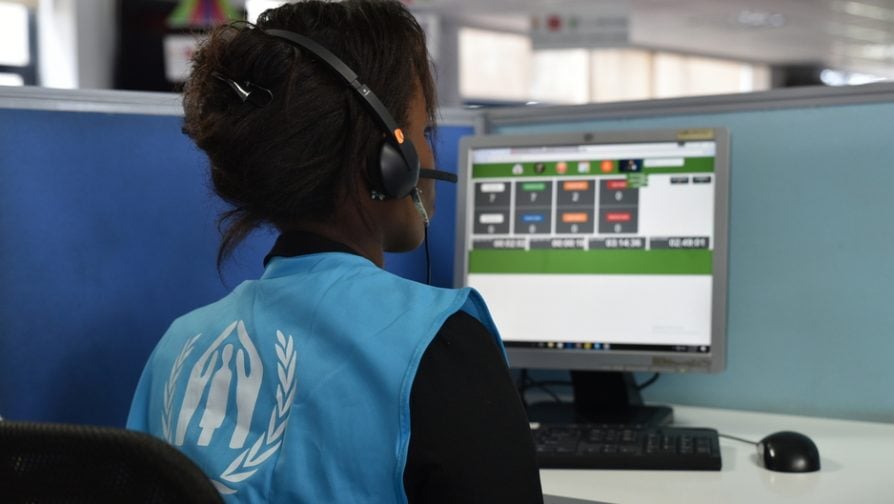
UNHCR Kenya’s Helpline enables refugees and asylum-seekers to have access to information and ask questions without coming to the office physically. The toll free number, 1517, is also multilingual. UNHCR/Modesta Ndubi
The Urban refugee program supports refugees and asylum-seekers who have been authorized to reside in urban areas, including Nairobi, Mombasa, Nakuru, Eldoret, Kitale, Meru-Maua, Isiolo and Bungoma.
The protection environment in urban areas remains complex and unpredictable as refugees continue to be associated with insecurity and the encampment policy remains in force. Consequently, UNHCR continues to prioritize the preservation of urban asylum space, promote access to asylum and respect for the principle of non-refoulement.
Systematic monitoring of border areas and detention facilities as well as capacity building of law enforcement, immigration officers and other relevant stakeholders thus remain integral. Hand-in-hand with this is the continued provision of legal aid and representation as well as supporting the ongoing Refugee Bill and Refugee Policy processes.
UNHCR’s protection team and the Government’s Department of Refugee Services (DRS) are co-located at the Joint Refugee Service Center (JRSC) on General Mathenge Road in Westlands, Nairobi. Here, refugees and asylum-seekers can
access a range of protection services on an appointment basis through an established helpline.
In 2024, one of UNHCR’s key priorities will be supporting the Government in the development of draft Refugee Regulations to guide the implementation of the Refugees Act, 2021.
Community-based protection remains essential to the urban operations and requires continuous enhancement to ensure refugees have access to existing services and facilities within their host communities. Access to monthly financial stipends is centred on critical, life saving needs through individual assessments to efficiently target the minimal available assistance to the most vulnerable. Safe house accommodation is available in Nairobi for refugees with heightened protection risks.
UNHCR and its partners continue to enhance community engagement in all aspects of sexual and gender-based violence prevention and response, including exploring community safe housing and livelihoods safety nets.
Identification or use of foster care arrangements for separated children and unaccompanied minors as well as foster training, vocational assistance continues. Access to primary education remains a critical priority. Access to health care continues to be provided through the National Health Insurance Fund (NHIF) scheme. Self-reliance potential remain under-tapped hence the need for continued scalable livelihood support for refugee entrepreneurs in partnership with private financial institutions.
The current government policy is that all new arrivals who approach the Department of Refugee Services, should be registered and issued movement passes to proceed to Kakuma camp. This entails improving reception conditions and particularly, expanding the capacity of the existing Transit Center and putting in place a predictable transport arrangement that guarantees swift transfer of refugees from the Transit Center to Kakuma. Refugees with specific needs that meet the exemption criteria for not residing in the camp will continue to be handled by the Exemption Panel constituted by DRS and UNHCR.
UNHCR continues to work closely with DRS, and continues to advocate for the protection space through training, offering technical expertise in the areas of individual case management (including being part of the camp exemption committee), registration, refugee status determination, as well as providing technical support to the refugee Appeals Board. Central to the delivery of protection is the participation of the refugees themselves and the continuous engagement with the host communities through the existing local administrative structures. In its protection delivery, UNHCR applies the community-based protection approach, which entails continuous meaningful engagement with and involvement of refugees and host in identifying capacities and solutions to identified needs.
